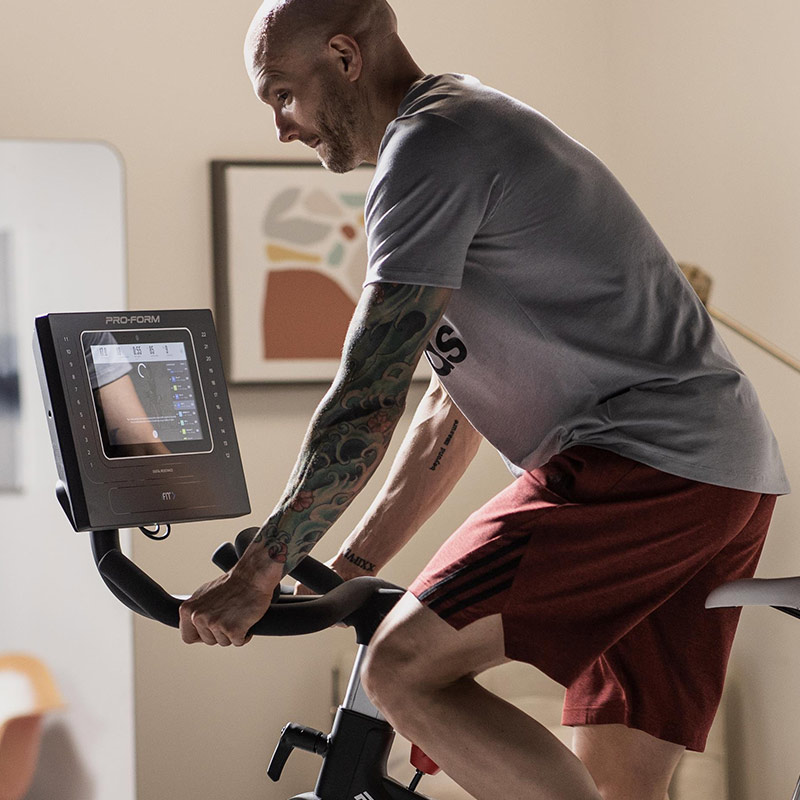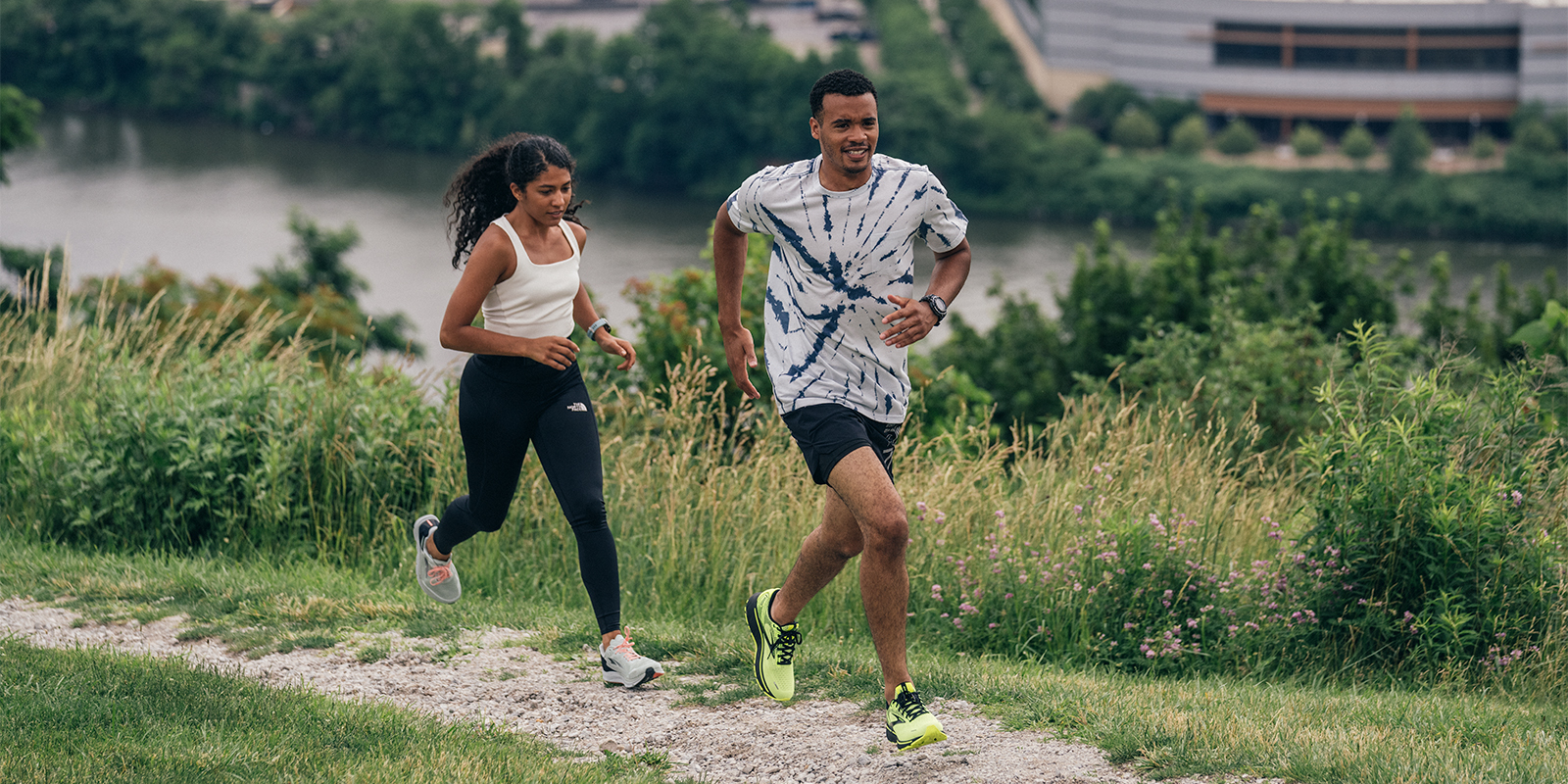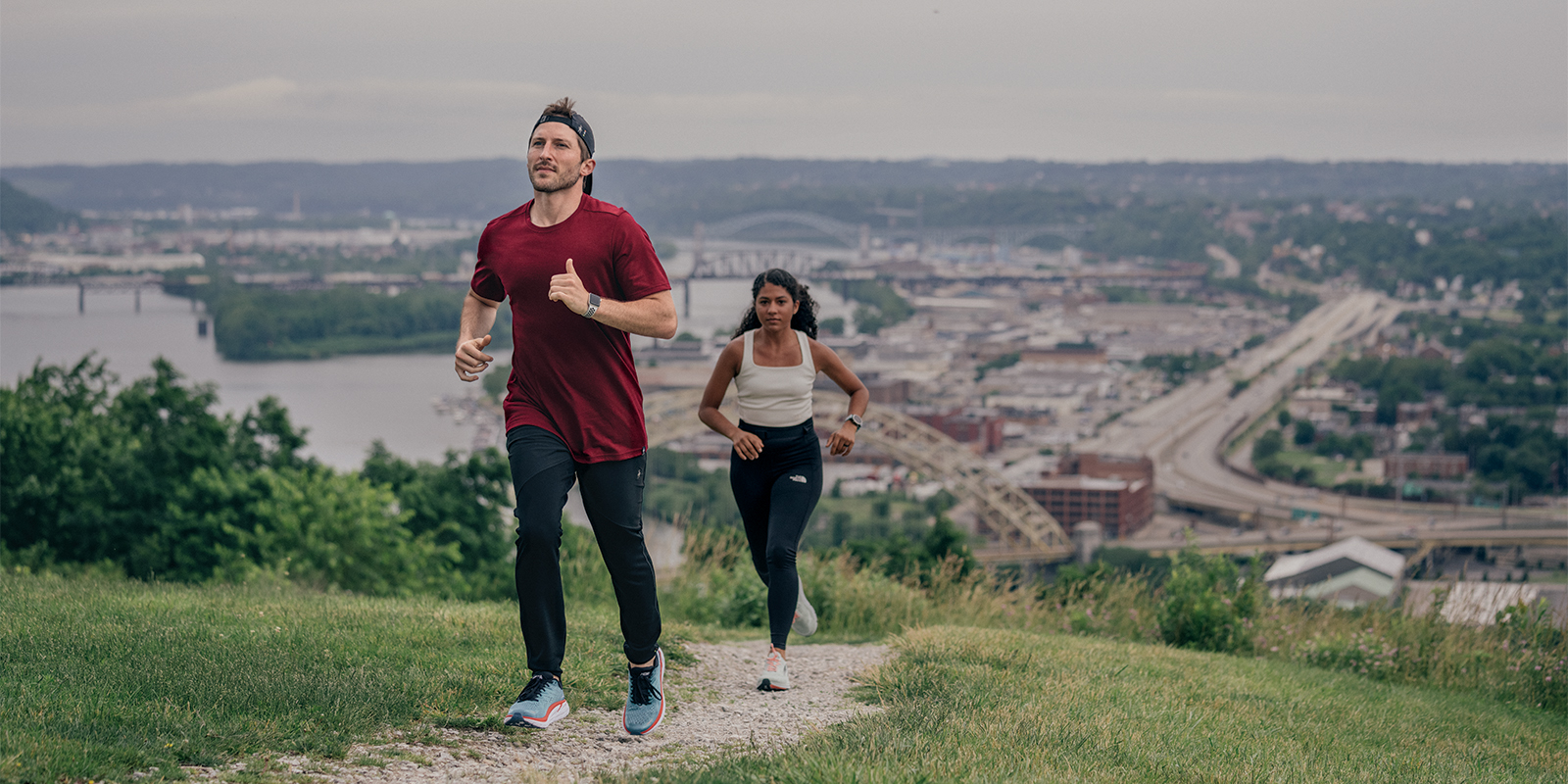Maybe you’re stuck inside because of extremely cold or even dangerous outdoor running conditions: a lightning storm, poor air quality due to wildfires, or some other factor. Or maybe you’re caring for children or loved ones who need you home. Whatever the reason, if you’re a runner, runners want to keep running—or at least be ready for a return to the outdoors.
The obvious way to maintain running fitness is to hop on a treadmill, though not everyone has (or has access to) a treadmill. For those who do, the following tips will help you to beat boredom during your indoor runs. Other cardio machines, like a rowing machine or stationary bike (Peloton, anyone?) can also effectively translate workouts to running fitness. Don’t have access to any type of cardio machine? Don’t worry: A few key at-home moves outlined below can keep you fit to run without any machinery at all.
Make the Most of the Treadmill
Running on a treadmill, obviously, mimics running outside better than any other cardio machine or exercise. But it can be dang boring. To spice things up, try these strategies.
Watch TV or Listen to a Podcast
If you’re able to see a TV from the treadmill, watching a show or movie can keep you entertained and pass the time. Even a tablet laid flat on the treadmill console will work fine, especially with wireless headphones to tune out the whirr of the treadmill belt. If you’d rather enrich or entertain yourself with a podcast, put those headphones to work and hit play—your treadmill time will fly by.
Do “Commercial” Intervals, or Music Intervals
If you’re watching live TV, run at an easy pace during your show, and pick up your speed during commercials. Once your show resumes, return to your easy pace. If you’re only listening to music, try running easy for one song, then pick up the pace for the next.
Play With Incline and Speed
One of the perks of running on a treadmill is that you can modify speed and incline with the touch of a button. To stave your boredom (and to make you seriously fit), adjust the incline and speed to vary your workout. For instance, start your run with 5 or 10 minutes of easy running at a 1% incline. Every minute (or more, depending on your fitness level and desired workout), increase either the incline by 1%, or the speed by .5 mph, alternating between the two. Once you’re at your max, but before you’ve hit a dangerous breaking point, descend the incline and decrease your pace.
Mimic the Trail
Trail runners, in particular, should play with incline: An increase correlates with a hill climb, while the decline is just as critical for training. Trail runners should also supplement treadmill time with ankle-strengthening exercises, like balancing on a wobble board or pillow, to keep ankle joints prepped for the off-kilter, technical nature of trails.
Row, Row, Row Your ERG
Working out on a rowing machine (also commonly called an ‘erg,’ short for ergometer) provides an intense cardiovascular workout that translates well to overall running fitness. The rowing motion is also low-impact; it doesn’t have running’s ground pounding repetition, making it an ideal tool for cross-training with certain injuries prone to aggravation outdoors—or for simply mixing up your routine.
Muscularly, rowing is also a full-body workout. Many think the motion only calls for arm and back muscle recruitment; in real practice, the quadriceps are the main muscle group recruited on a rowing machine. Gaining strength in your quads, while also strengthening your arms, back, and core helps yield real running benefits.
Though rowing technique takes a while to master, it’s also a fun challenge. As you become more efficient, you’ll row more comfortably, and for longer—gaining fitness. Rowing machine manufacturers often have good instruction videos on their websites.






